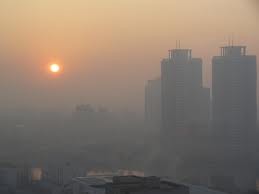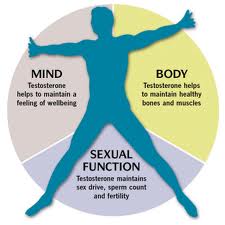In early 1900 lung cancer was unheard of. This was before the cigarette industry started to mass-produce and market cigarettes.
However, ever since the arrival of the industrial revolution air quality has suffered. In China poor air quality has now reached such enormous values that the specialized cancer agency of the World Health Organization, the International Agency for Research on Cancer (IARC) has labeled poor air quality as one of the causes of lung cancer.
When you rank countries by average air pollution measurements, one sees that Europe, the US and South America overall have good ratings, whereas the Middle Eastern countries, China and India have poorer ratings.
However, when the pollution index of cities where the population is much denser than in the countries at large, are tabulated a much different picture emerges: Cities in Iran, India and Pakistan stand out as particularly bad followed by cities in China, Eastern Europe, Paris, London, Berlin, cities in California (the populous State), Chicago and New York.
Pollution does not stay local, but travels through the stratosphere around the globe. The result is that now 10 to 15% of lung cancer in the US occurs in patients who never smoked. This translates into 16,000 to 24,000 deaths annually of never-smokers in the US.
In certain cities such as Beijing the lung cancer rates have doubled in 9 years between 2002 and 2011. As this article shows lung cancer in never smokers can be caused from exposure to radon, to second-hand tobacco smoke, and other indoor air pollutants can also cause such cancers. But the outdoor air quality has been a problem ever since the industrial revolution, which started around Europe in the 1800’s and first part of the1900’s. In the latter half of the 1900’s much of the industrial wave has migrated to the Middle East, to India and China. But the air quality of the whole world has suffered as the jet stream and other air currents carry pollution in the stratosphere all around the globe.
History of pollution in various regions
1. In Germany’s Ruhr district (“Ruhrgebiet”) in North Rhine-Westphalia, a highly populated industrial area, pollution reached a peak in the late 1950’s. From 1963 onward many of the coal mines, iron ore mines and other mineral mines closed down. 50 years ago the German Chancellor, Willy Brand was concerned about the environment and promised that blue skies would return to the Ruhr district again. A special task force was initiated and maximally allowable limits were established for industries’ pollution emissions and enforced by the German government. Government and industry were co-operating in developing anti-pollution measures, which have cleared up a lot of the pollution since. With regard to car emissions lead free gasoline was introduced and carburetors ensured more complete burning of exhaust gases. This is now common and accepted anywhere except for diesel fume exhaust, which nobody wants to address despite proven carcinogenicity.
Now Germany is one of the leaders in green technology, which is also important for tourism.
2. England has its own legacy of pollution in soil and air from the industrial revolution. The soil of moorland, which soaked up acid rain for decades, is more acidy than lemon juice and it will take a long time despite industrial complexes having closed long time ago, before the soil quality will be returned to normal.
3. Hamilton in Ontario/Canada has had a longstanding pollution problem, which I witnessed from 1976 until my departure in 1978. It is well known that Stelco, the local steel plant downtown Hamilton is sending polluting emissions into the air. In 1976 a vising professor from Australia gave an interesting talk about a study that was done at that time regarding the risk of developing bronchogenic carcinoma (a synonym for lung cancer) in the immediate surroundings of the Stelco plant. He said that this was one of the first studies to show that the distance of people’s houses from the source of pollution mattered as that determined how concentrated the air pollution was (the closer the more polluted the air). This affected cancer rates: they were much higher in the immediate surrounding of Stelco when compared to the average rate in the rest of Hamilton. This difference was very significant within a radius of 1 kilometer (= 0.62 miles) from the Stelco plant.
Just in May of 2013 the local cancer agency of Hamilton announced that the lung cancer rate in Hamilton was higher than elsewhere in Ontario because of a combination of poor air quality and of a higher percentage of people smoking. Then in August 2013 the city of Hamilton announced a new air pollution bylaw for stricter pollution measures to improve the air quality in the downtown area. It is just a pity that Hamiltonians had to wait until 2013 before the city approved an anti-pollution bylaw that could have been passed 50 years earlier like in Germany’s Ruhr district!
4. In 2008 Pittsburg, a former steel manufacturer town like Hamilton, Ont. outdid Los Angeles with regard to small particle air pollution.
Lung cancer prevention by the authorities
As mentioned before up o15% of lung cancer is caused by environmental exposure. So, we ourselves can only prevent 85% of lung cancer by not smoking and not exposing ourselves to industrial emissions or to smoke from incense. However, in many cities around the world you will get exposed to air pollutants that are well above the safe limits, so the risk of getting lung cancer from just breathing the air there can be much higher than in rural areas where there is no industry.
Technologies to control air pollution are widely available. We need to exert pressure on politicians to show leadership around the world. Government regulations to lower emission rates need to be put into place and inspectors need to ensure the rules and regulations are adhered to. Without reducing emissions of cancer producing gases and chemicals right at the source (open burning of cuttings in orchards or burning cut trees), cutting emissions of cars, planes, ships, diesel cars, locomotives, electric generator plants etc. the air quality will not improve. Despite some costs involved industry, governments and individuals have to work together to make clean air happen.
The residents of those countries that have low pollution values will not benefit, if pollution continues to occur in other parts of the world as it just travels in the stratosphere around the globe until it arrives right here at home! We need an international pollution police. Satellites can be used to monitor where pollution occurs and this can be followed up through the local regulatory bodies with penalties and remedial actions.
What can I do personally to prevent lung cancer?
1.The most obvious step is to quit smoking and ask smokers who come to your place to smoke outside (not in your home).
2.Consider moving away from the city, if the air quality is unacceptable to a place where there is low air pollution.
3.Vitamin D3 has been shown to prevent colorectal cancer, but as there are vitamin D receptors found on the surface of various cells in tissue around the body including the lungs, many researchers feel that this vitamin in higher doses (2000 IU to 5000 IU) has probably a wider applicability in preventing cancers, even lung cancer.
4.Cutting out sugar and adopting a Mediterranean type diet is a prudent thing to do; also cutting down your calories to the maintenance you need (mildly ketogenic diet). If you bought body composition scales, it would display what your daily calorie consumption is and you should not exceed this, or else you’ll gain weight. An aging man who is overweight will experience hormone changes as fat is being metabolized and the enzyme aromatase contained in fatty tissue will turn male hormones (testosterone, DHT, androstenedione) into estrogen. Estrogen (particularly estradiol) is a known carcinogen that has been proven to cause breast cancer in women and prostate cancer in men. However lung cancer is also being promoted in women by estrogen as discussed in this link. In men one needs to remember that lung cells have estrogen receptors and there is concern in aging men with higher estradiol levels that this can promote cell divisions in existing lung cancer. So, it is important to maintain a normal body mass index between 21 and 24 (well below 25.0 and well above 18.5, which are the official accepted limits). This way there is no problem with insulin resistance (too high an insulin level), and other metabolic substances (cytokines, growth hormone like factors and tumor necrosis factor-alpha from body fat) that are cancer promoting.
5. If testosterone deficiency is present, which is common in older men, testosterone will have to be replaced with bioidentical hormones. It is a myth that testosterone would cause prostate cancer. Testosterone in males is necessary to maintain a normal metabolism including the immune system, which then can fight lung cancer and any other cancers.
6. Exercise and reducing beef consumption are also often mentioned in terms of preventing lung cancer.
7. Here are several recommendations from the LifeExtension Foundation that I found very useful in terms of lung cancer prevention. This link shows that antioxidant vitamins such as vitamin C, alpha tocopherol, the minerals selenium and zinc are also helping to reduce the lung cancer rate. Drinking green tea has also been shown to be effective in a dose-response curve manner (more tea protecting more from lung cancer). Vitamin B12 and folate have been shown to reduce abnormal bronchial cell growth in smokers as shown by repeat bronchoscopy studies.
8. Those who have been smokers in the past and those who have been around heavy smokers for more than 10 years in the past should consider having a preventative bronchoscopy done by a lung specialist (also called respirologist or pulmonologists). This way any suspicious areas with precancerous lesions can be biopsied during the procedure and attended to.
Hopeful research for new lung cancer treatments
Lung cancer is a disease that is best prevented. Once a person gets lung cancer, the prognosis is still very poor. However, cancer researchers are getting close to newer treatments involving genetically modified T-cells (killer cells) as was recently achieved for leukemia. Similar research is going on regarding ovarian cancer, melanoma, lung cancer and pancreatic cancer.
More information about lung cancer: http://nethealthbook.com/cancer-overview/lung-cancer/
Conclusion
It is not acceptable to let pollution take its course , the way politicians around the globe have handled this in the past 6 decades with a few notable exceptions mentioned. We all suffer a higher risk of getting lung cancer, even if we have been life-long non-smokers. Right now up to 15% of lung cancer in most populations are of this type. However, in Beijing this number is already much higher. The technology is available; Germany has led the way in the Ruhr district in the 1960’s and beyond. In my opinion the G8 meetings should have this high on their agendas and send technological aid to all the regions that have higher than the average world pollution index under the mandate of a special UN commission. This should be supported by the major industrial players with the knowledge that they will prevent the death of millions of potential consumers down the road, which will on the long-term pay off the relatively minor investment of installing pollution controls, before lung cancer levels rise even more.
Last edited Nov. 7, 2014
